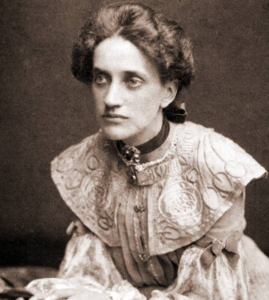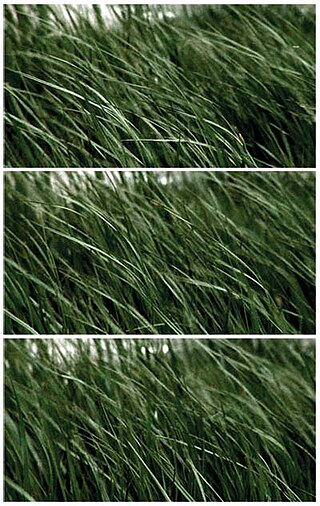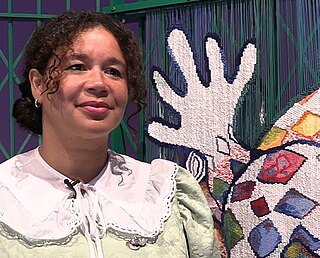Related Research Articles

Ann Macbeth was a British embroiderer, designer, teacher and author. She was a member of the Glasgow Movement where she was an associate of Margaret MacDonald and Charles Rennie Mackintosh, and many other 'Glasgow Girls'. She was also an active suffragette and designed banners for organisations supporting women’s suffrage, such as the Women’s Social and Political Union

Dame Elizabeth Violet Blackadder, Mrs Houston, was a Scottish painter and printmaker. She was the first woman to be elected to both the Royal Scottish Academy and the Royal Academy of Arts.
Christine Borland is a Scottish artist. Born in Darvel, Ayrshire, Scotland, Borland is one of the Young British Artists (YBAs) and was nominated for the Turner Prize in 1997 for her work From Life at Tramway, Glasgow. Borland works and lives in Kilcreggan, Argyll, as a BALTIC Professor at the BxNU Institute of Contemporary Art.

Joan Kathleen Harding Eardley was a British artist noted for her portraiture of street children in Glasgow and for her landscapes of the fishing village of Catterline and surroundings on the North-East coast of Scotland. One of Scotland's most enduringly popular artists, her career was cut short by breast cancer. Her artistic career had three distinct phases. The first was from 1940 when she enrolled at the Glasgow School of Art through to 1949 when she had a successful exhibition of paintings created while travelling in Italy. From 1950 to 1957, Eardley's work focused on the city of Glasgow and in particular the slum area of Townhead. In the late 1950s, while still living in Glasgow, she spent much time in Catterline before moving there permanently in 1961. During the last years of her life, seascapes and landscapes painted in and around Catterline dominated her output.

Richard Ashrowan, is a moving image/video artist working in Scotland. He specializes in multi-screen moving image installations, relating to themes connected with natural landscapes.

Dovecot Studios or Dovecot is a tapestry studio and arts venue in Edinburgh, Scotland.

The Great Tapestry of Scotland is one of the world's largest community arts projects, hand stitched by 1,000 people from across Scotland. It is made up of 160 linen panels and 300 miles of wool – enough to stretch the entire length of Scotland. It is now on permanent display in its own purpose-built gallery and visitor centre in the town of Galashiels in the heartland of the Scottish Borders.
Victoria Elizabeth Crowe is a Scottish artist known for her portrait and landscape paintings. She has works in several collections including the National Galleries of Scotland, the National Portrait Gallery, London, and the Royal Scottish Academy.

Kate Whiteford OBE is a Scottish artist. Her work includes painting, screen prints, textiles, land art and installations.
Alexander Moffat OBE RSA known as Sandy Moffat, is a Scottish painter, author and teacher.

Dorothy Carleton Smyth was a Scottish artist, a compatriot of Charles Rennie Mackintosh, active in theatrical and costuming design, and one of the leading lights at the Glasgow School of Art during the post WWI period. Her association with the Arts & Crafts Movement in England and Scotland, together with her work in fine book-binding, illustration, and faculty leadership at the GSA, place her at the hub of the Golden Age of Illustration. Named, in 1933, as GSA's first female director—by a unanimous vote of the School's governing board—her tragic early death by brain hemorrhage in that same year deprived Scotland of an accomplished, active and internationally respected proponent of Scottish art.

Helen Paxton Brown also known as "Nell", was an artist associated with the Glasgow Girls. Born in Hillhead, Glasgow to a Scottish father and English mother and she spent most of her life in Glasgow. Best known for her painting and embroidering she also worked in a range of mediums such as leather, book binding and also painted china.
Tessa Lynch is a British artist. She lives and works in Glasgow, Scotland. She mimics objects and scenarios found in the urban landscape, charting the emotional impact of our built environment and the structures that shape it. Connected research spans from investigating the existence of the female flaneur/flâneuse through to activism and town planning.
Jacki Parry RSA is an Australian born artist, printmaker, papermaker, former lecturer at the Glasgow School of Art and a founding member of the Glasgow Print Studio and the Paper Workshop, Glasgow.

Carol Mary Rhodes was a Scottish artist known for paintings and drawings of landscapes and marked by human intervention. Rhodes was born in Edinburgh, but spent her infancy and youth in Serampore, India. She moved to the UK in her mid teens and studied fine art at the Glasgow School of Art. Graduating in 1982 she became politically active around issues of disarmament, feminism and social justice. Her focus returned to painting around 1990, and she developed her distinctive idiom of aerial-view, ‘man-made’ landscapes around 1994. These began to be exhibited in the United Kingdom and internationally, and entered many public collections. Rhodes’s work, and her part-time lecturing at Glasgow School of Art, was influential for younger generations of artists. In 2013, she was diagnosed with motor neurone disease.
Jessie Mary McGeehan (1872–1950) was a Scottish artist renowned for her painting and mosaic work, often depicting genre scenes, landscapes and figures.
Clara Ursitti is a Canadian-Italian artist based in Glasgow, Scotland. She was born in North Bay, Ontario in 1968.

Alberta Whittle is a Barbadian-Scottish multidisciplinary artist who works across media: film, sculpture, print, installation and performance. She lives and works in Glasgow. She was the winner of the Margaret Tait Award in 2018, winner of the Frieze Artist Award in 2020, received a Turner Prize bursary, also in 2020, and represented Scotland at the 59th International Art Exhibition – La Biennale di Venezia in 2022.
Archie Brennan (1931–2019) was a noted Scottish tapestry weaver. He served his apprenticeship at the Edinburgh Tapestry Co and studied at Edinburgh College of Art. He went on to work at the College establishing their department of Tapestry and Fibre Arts. He also served Dovecot as their artistic director.
Susan Fletcher Crawford ARE was a Scottish artist and printmaker, best known for her topographical etchings of Glasgow, the Scottish Highlands and other Scottish cities. Crawford was Teacher of Etching at the Glasgow School of Art between 1894 and 1917 and taught a number of artists who would become associated with the Etching Revival.
References
- 1 2 Scottish Tapestry Artists Group Second Exhibition. Scottish Tapestry Artists Group. 1978.
- 1 2 3 Penny Dunford (1990). A Biographical Dictionary of Women Artists in Europe and America since 1850 . Harvester Wheatsheaf. ISBN 0-7108-1144-6.
- ↑ Frances Spalding (1990). 20th Century Painters and Sculptors. Antique Collectors' Club. ISBN 1-85149-106-6.
- 1 2 3 David Buckman (2006). Artists in Britain Since 1945 Vol 1, A to L. Art Dictionaries Ltd. ISBN 0-953260-95-X.
- ↑ Carrell, Christopher (1987). Why I choose red ... Glasgow: Third Eye Centre. ISBN 0-906474-62-0. OCLC 21229257.
- ↑ Clare Johnston (27 September 2015). "The secret of our success ? You must know how to party arty". Daily Record (Scotland) . Retrieved 8 May 2018.
- ↑ "Sam Ainsley - Artist and teacher". Saltire Society, Scotland. Archived from the original on 10 May 2018. Retrieved 8 May 2018.
- ↑ Jan Patience (27 September 2017). "Critics choice: Sam Ainsley, An Tobar Gallery, Tobermory". The Herald (Glasgow) . Retrieved 8 May 2018.
- 1 2 "Sam Ainsley". www.saltiresociety.org.uk. Retrieved 15 November 2018.
- ↑ "After Growth and Form - Sam Ainsley and Roger Wilson". Glasgow Print Studio. 2011. Retrieved 15 November 2018.
- ↑ "Sam Ainsley". Comar. Archived from the original on 23 April 2019. Retrieved 15 November 2018.
- 1 2 "Sam Ainsley - Wednesday is Cobalt blue, Friday is Cadmium red". Glasgow Life. Retrieved 24 May 2024.
- ↑ "AHM: About AHM". AHM. Retrieved 15 November 2018.
- ↑ "NEWS RELEASE: AHM - Sam Ainsley, David Harding and Alexander Moffat awarded Honorary Doctorates at GSA Graduation" . Retrieved 24 May 2024.
- ↑ JD St Claire (3 September 2018). "Dr Sam Ainsley Biography – The Essential School Of Painting" . Retrieved 24 May 2024.